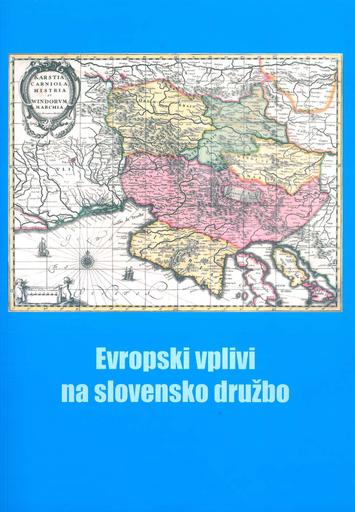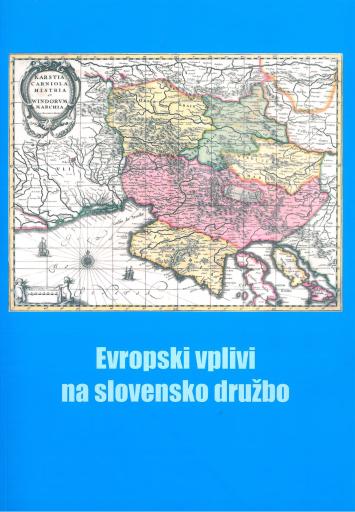/
Literatura
/
Monografije
»Nemci imajo Götheja in Schillerja skor po vseh hišah; mi pa zaljšamo sobe z našimi velemožmi!«
Izbor likovnih upodobitev pesnikov Vodnika in Prešerna v drugi polovici 19. stoletja

Avtor(ji):Damir Globočnik
Soavtor(ji):Nevenka Troha (ur.), Mojca Šorn (ur.), Bojan Balkovec (ur.)
Leto:2008
Založnik(i):Zveza zgodovinskih društev Slovenije, Ljubljana
Jezik(i):slovenščina
Vrst(e) gradiva:besedilo
Ključne besede:narodna identiteta, pesniki, dr. France Prešeren, Valentin Vodnik, oblike čaščenja, likovne upodobitve, javni spomeniki, national identity, poets, Dr. France Prešeren, Valentin Vodnik, forms of vénération, artistic portrayal, public monuments
Zbirk(e):Zbirka zgodovinskega časopisa ; 35
Avtorske pravice:

To delo avtorja Damir Globočnik je ponujeno pod Creative Commons Priznanje avtorstva-Nekomercialno-Brez predelav 4.0 Mednarodna
Datoteke (1)

Ime:evropski_vplivi_na_slovensko_druzbo.pdf
Velikost:185.05MB
Format:application/pdf
Stalna povezava:https://hdl.handle.net/11686/file18570
Opis
In the second part of the 19 th Century Slovenes gradually adopted all mechanisms and organizational as well as manifestative forms of paying public respect to their prominent kinsmen. Since Slovene language, along with Slovene culture expressed in writing, played a central role in the formation of Slovene nationhood poets Valentin Vodnik, France Prešeren, and Jovan Vesel Koseski were honored as notable contributors toward this end. Their portrayals, first their portraits published in books and later in the form of public memorials, were all inspired by examples from abroad. The first statues of Vodnik and Prešeren were plaster busts made in 1858 and in 1865, respectively; during ceremonies dedicated to the poets their heads were crowned with laurei wreaths. Smaller filli-body statues were placed in middle-class salons, libraries, and on the premises of reading societies. Primarily due to their symbolic value, public statues played the principal role in strengthening the importance of depicted notables (the first initiatives for raising such monuments came in mid-19th Century; the unveiling of the monument dedicated to Vodnik in 1889; the unveiling of Prešeren’s monument in 1905). In most cases, the formai, iconographie, and motive patterns in depicting thè heroes who had promoted Slovene national identity became widely adopted only after a certain delay.
Metapodatki (13)
- identifikatorhttps://hdl.handle.net/11686/35257
- naslov
- »Nemci imajo Götheja in Schillerja skor po vseh hišah; mi pa zaljšamo sobe z našimi velemožmi!«
- Izbor likovnih upodobitev pesnikov Vodnika in Prešerna v drugi polovici 19. stoletja
- »Goethe and Schiller Can Be Found in Almost Every German House, But We Adorn Our Rooms with Our Own Notable Men!«
- A Selection of Artistic Representations of Slovene Poets Vodnik and Prešeren in the Second Half of the 19th Century
- avtor
- Damir Globočnik
- soavtor
- Nevenka Troha (ur.)
- Mojca Šorn (ur.)
- Bojan Balkovec (ur.)
- predmet
- narodna identiteta
- pesniki
- dr. France Prešeren
- Valentin Vodnik
- oblike čaščenja
- likovne upodobitve
- javni spomeniki
- national identity
- poets
- Dr. France Prešeren
- Valentin Vodnik
- forms of vénération
- artistic portrayal
- public monuments
- opis
- Slovenci so v drugi polovici 19. stoletja od večjih narodov postopoma prevzeli vse mehanizme, organizacijske in manifestativne oblike javnega čaščenja pomembnih rojakov. Zaradi osrednje združevalne vloge slovenskega jezika in pisne kulture so za narodotvorne junake veljali pesniki, zlasti Valentin Vodnik, dr. France Prešeren in Jovan Vesel Koseski. Njihove upodobitve, objave prvih portretov v knjigah in javni spomeniki so nastajali pod vplivom zgledov pri drugih evropskih narodih. Prvi kiparski upodobitvi Vodnika in Prešerna sta doprsji iz mavca (1858 in 1865), ki soju na pesnikoma posvečenih slovesnostih kronali z lovorovim vencem. Manjši celopostavni kipci so nastali za meščanske salone, knjižnice in čitalnice. Najpomembnejšo vlogo pri utrjevanju pomena nekega velmoža so imeli javni spomeniki, predvsem po zaslugi svoje simbolne pomenljivosti (prve pobude za postavitev spomenikov sredi 19. stoletja, odkritje Vodnikovega spomenika 1889, odkritje Prešernovega spomenika 1905). V večini primerov so se formalni, motivni in ikonografski vzorci za upodabljanje narodotvornih junakov uveljavili z zamudo.
- In the second part of the 19 th Century Slovenes gradually adopted all mechanisms and organizational as well as manifestative forms of paying public respect to their prominent kinsmen. Since Slovene language, along with Slovene culture expressed in writing, played a central role in the formation of Slovene nationhood poets Valentin Vodnik, France Prešeren, and Jovan Vesel Koseski were honored as notable contributors toward this end. Their portrayals, first their portraits published in books and later in the form of public memorials, were all inspired by examples from abroad. The first statues of Vodnik and Prešeren were plaster busts made in 1858 and in 1865, respectively; during ceremonies dedicated to the poets their heads were crowned with laurei wreaths. Smaller filli-body statues were placed in middle-class salons, libraries, and on the premises of reading societies. Primarily due to their symbolic value, public statues played the principal role in strengthening the importance of depicted notables (the first initiatives for raising such monuments came in mid-19th Century; the unveiling of the monument dedicated to Vodnik in 1889; the unveiling of Prešeren’s monument in 1905). In most cases, the formai, iconographie, and motive patterns in depicting thè heroes who had promoted Slovene national identity became widely adopted only after a certain delay.
- založnik
- Zveza zgodovinskih društev Slovenije
- zbirka
- Zbirka zgodovinskega časopisa ; 35
- datum
- 2008
- tip
- besedilo
- jezik
- Slovenščina
- jeDelOd
- pravice
- licenca: ccByNcNd
Seznam literature v delu (21)
| Stran | Avtor | Naslov | Vir | Kraj | Založba | Leto |
|---|---|---|---|---|---|---|
| 80 | Taylor, A.J.P. | Habsburška monarhija 1809-1918: zgodovina avstrijskega cesarstva in Avstro-Ogrske | Ljubljana | 1956 | ||
| 80 | Lokar, Aleš | Razvoj Slovencev kot sistem | Sodobnost | 1972 | ||
| 80 | Hobsbawm, Eric | Obdobje revolucije | Ljubljana | 1968 | ||
| 80 | Vodopivec, Peter | Slovenci od Kopitarja do Prešerna | Pomlad narodov / Völkerfrüling, Zgodovinska serija oddelka za zgodovino vzhodne in jugovzhodne Evrope na Univerzi v Celovcu in Domu prosvete Sodalitas v Tinjah/ Tainach, 6. zvezek | Celovec | 1999 | |
| 81 | Stritar, Josip | Preširnove poezije : pesmi Franceta Preširna | Klasje z domačega polja | Ljubljana | ||
| 81 | Vošnjak, Josip | Največ sveta otrokom sliši Slave | Slovenski narod | |||
| 83 | Malavašič, Fran | Žalostna novica! | Pravi Slovenec | |||
| 83 | Kurz Ludwig, R. v. | Franz Seraph Ritter von Kurz zu Thurn und Goldenstein (1807-1878) | Kunsthistorische Studien | Graz | 1908 | |
| 83 | Malavašič, Fran | Slovesnosti, obhajane v spomin stoletnega rojstnega dneva Valentina Vodnika, očeta slov. pesništva | Novice | |||
| 83 | Chevalier, Jean | Slovar simbolov : miti, sanje, liki, običaji, barve, števila | Ljubljana | 1995 | ||
| 84 | Marin, Marko | Novosti k pesnikovi ikonografiji: Ob sto enaindevetdeset-letnici rojstva pesnika dr. Franceta Prešerna | Gorenjski glas, priloga Snovanja | 1931 | ||
| 84 | Marin, Marko | Franz Seraph Ritter von Kurz zu Thurn und Goldenstein: njegov pomen za slovensko umetnostno zgodovino med letoma 1835-1867 : doktorska disertacija | Ljubljana | 1971 | ||
| 85 | Costa, Etbin H. | Biographische Skizze, Vodnikov spomenik | Ljubljana | |||
| 86 | Žitko, Sonja | Zajčeve upodobitve Prešerna | Prešernov koledar | 1990 | ||
| 86 | Jezernik, Božidar | Moč spomina, premoč pozabe | Zgodovina za vse | 2004 | ||
| 87 | Mehring, Franz | Goethe in današnji čas | Prispevki k zgodovini književnosti | Ljubljana | 1952 | |
| 87 | Murko, Matija | Misli k Prešernovemu življenjepisu | Ljubljanski zvon | 1901 | ||
| 87 | Kuk, Ivan | O spominu Vodnikovem | Slovenski Prijatel | |||
| 87 | Toman, Lovro | Vodnikov stoletni rojstni dan 3. februarja 1858. leta, Dr. Lovro Toman | Ljubljana | |||
| 88 | Pötschner, Angelina | Porzellanreduktion der Goethe-Schiller-Denkmals in Weimar, Der Traum vom Glück : Die Kunst des Historismus in Europa | Wien | Künstlerhaus Wien & Akademie der bildenden Künste Wien | 1996 | |
| 89 | Žitko, Sonja | Historizem v kiparstvu 19. stoletja na Slovenskem | Ljubljana | 1989 |
